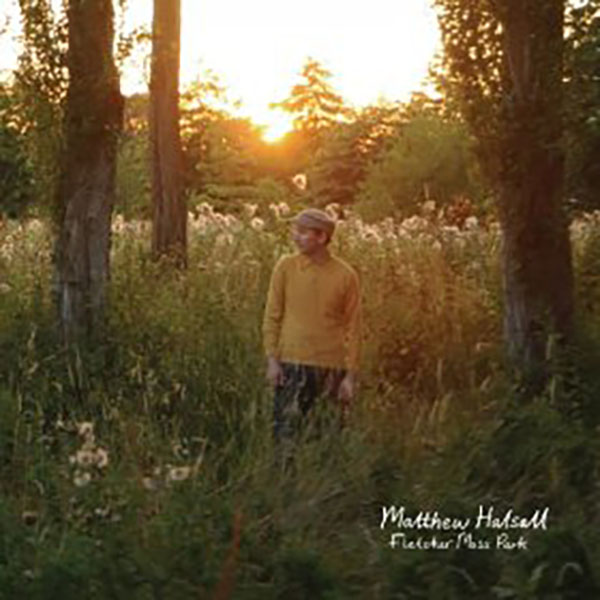
by Ian Mann
December 19, 2012
/ ALBUM
His most individual and personalised album to date - and arguably his best.
Matthew Halsall
“Fletcher Moss Park”
(Gondwana Records GONCD007)
“Fletcher Moss Park” represents Manchester based trumpeter and composer Halsall’s fourth album exploring the musical legacy of Miles Davis’ modal (“Kind Of Blue”) period and the later “spiritual jazz” of John Coltrane, Alice Coltrane, and Pharaoh Sanders. “Sending My Love” (2008) and “Colour Yes” (2009) were followed by 2011’s “On The Go”, the first Halsall recording to be reviewed on this site.
All three have a deeply personalised sound and atmosphere which Halsall takes a stage further on “Fletcher Moss Park”, released on his own Gondwana label. Indeed there’s an almost Zen like calm about the music here, the mood of contemplation enhanced by the bucolic surroundings that inspired it. Fletcher Moss Park in suburban Didsbury was donated to the city of Manchester in 1919 by Alderman Fletcher Moss, a well known philanthropist. The park includes a walled rock garden laid out by the botanist Robert Wood Williamson plus a variety of wildlife habitats. Little more than a stone’s throw from the M63 the park represents a veritable oasis amidst Manchester’s suburban sprawl. The area has provided Halsall with a respite from the rush of city life, an area in which to meditate and write and the music on the album is evocative of this spiritual retreat, it’s the logical culmination of the journey documented on Halsall’s previous three recordings.
The personnel on “Fletcher Moss Park” includes many familiar faces from his previous releases with the nucleus concentrated around the regular members of his six piece working band. Fellow spiritual traveller Nat Birchall plays saxophone on the first three cuts, although his role is essentially textural, bassist Gavin Barras is a constant presence with piano duties being shared between Adam Fairhall and Taz Modi. Rachael Gladwin’s harp graces four tracks and the drum stool is shared between Gaz Hughes and Luke Flowers. Elsewhere Lisa Mallett’s flute is heard on the descriptive “The Sun In September” and an unusual string quartet (violinists Holly Simpson and Davinder Singh, cellist Adrianne Wininsky plus the double bass of Barras) appear on two back to back interludes.
The seven track programme begins with “Cherry Blossom”, the lush introduction featuring the glistening harp playing of Gladwin, a musician who now seems to be a more fully integrated member of the ensemble following her previous “guest appearances”. The main body of the tune features Halsall’s mellifluous trumpet meditations above Hughes’ gently brushed grooves and Barras’ deeply resonant bass pulse. Fairhall’s piano is lyrical and flowing, capturing something of the fragility of the tune’s subject. A lovely start.
The mood is sustained by the introduction to the title track as Gladwin’s harp intertwines with Barras’ luxuriantly rich arco bass. The bassist then picks out a sturdy plucked groove which serves as the backbone for some richly textured ensemble passages plus unhurriedly eloquent solos from Halsall and Gladwin.
“Mary Emma Louise” (“a tribute to someone special” says the press release) features the leader’s long, wistful trumpet melody lines and a plangent solo above the quietly busy rhythms of Hughes and Barras. Gladwin’s harp adds its distinctive lustre to the proceedings and there’s also something of a feature for the consistently excellent Barras.
Halsall actually sits out on the two string quartet pieces “Sailing Out To Sea” and “Wee Lan” (translation “Little Orchid”) stating that the musicians involved captured his intentions perfectly without recourse to further embellishment. “Sailing Out To Sea” is a charming miniature full of delightfully rich string textures that evoke a certain poignancy.
“Wee Lan” sees Barras putting down his bow and creating a bass figure around which the others gravitate, sometimes bowing but also playing pizzicato as they evoke the oriental imagery suggested by the tune’s title. Like so much of Halsall’s music this delightful musical morsel has a strongly descriptive quality.
The final two pieces, “The Sun In September” and “Finding My Way” find Halsall collaborating with pianist Taz Modi and drummer Luke Flowers, musicians with whom he also works in an electronica influenced trio. The versatile Halsall also runs the occasional twelve piece ensemble the Gondwana Orchestra, works as DJ, producer and re-mixer, and has even collaborated with the Brighouse & Rastrick Brass Band, an experience that may have influenced the rich colours and textures to be heard on “Fletcher Moss Park”.
“The Sun In September” also features Gladwin’s harp and Mallett’s flute, the latter evoking both Oriental and Celtic images in a superb performance. Halsall’s rich toned solo sounds flugel like, with the understated accompaniment of Modi, Flowers and Barrass complementing the front line soloists superbly and with Gladwin also sprinkling some harp generated fairy dust on to the proceedings.
The closing “Finding My Way” features the skittering, electronica influenced grooves of Flowers, an extension of his role with the trio and also a nod to his work with the Cinematic Orchestra. Modi also comes into his own here alongside the slightly melancholy ring of Halsall’s trumpet. This is the most contemporary sounding item on the record but it still fits in neatly with the album’s overall mood and ethos.
“Fletcher Moss Park” is less obviously in thrall to Davis and Coltrane than Halsall’s previous offerings and as such represents his most individual and personalised album to date - and arguably his best. The mood of contemplation and spirituality is maintained throughout, it’s as if William Blake had taken up the trumpet and moved to Manchester.
blog comments powered by Disqus